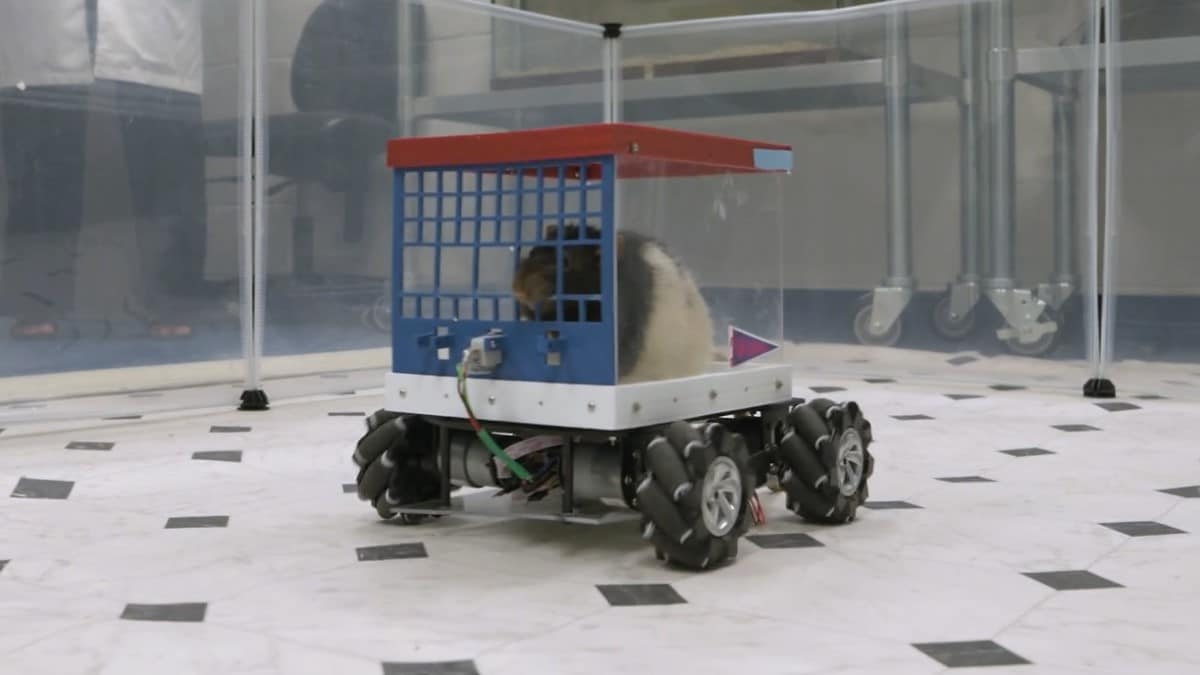For me, it was a Toyota GR86. For Mario AndRATti (name fictionalized for rodent privacy), it was an electric vehicle (EV) – a cut-down plastic cereal container modified by a robotics professor into a tiny electric car.
My GR86 (a near-clone of the Subaru BRZ) was the closest thing 2024 has to a true throwback sports car. It had an affordable price, rear-wheel drive (RWD), and a short-throw stick. It wasn’t perfect. Getting in was like climbing into a hole in the road, and you had to reach behind your back to grab your coffee from the cup holder.
Related: Best Sports Cars Of 2024 And 2025
Mario’s rat rod wasn’t ideal, either. The professor had to use chew-proof wiring and tires to keep him from gnawing on it. Steering happened via levers, not a wheel. And his tail dragged on the floor behind it.
But the two vehicles helped us both discover the pure joy of driving this year. How can you tell? We both took the long route just to get more time behind the wheel.
I took a highway cloverleaf twice, a little faster than strictly necessary, just to feel the little Toyota fight for grip and push me into the seat bolsters a little. The car, gloriously, wasn’t powerful enough to put me in much danger. It’s no overpriced toy built by engineers showing off — just a little 2-door with the right mechanical bits to be fun at legal speeds. I chose the long route to the wine store, even though my date was starting soon, for the joy of driving.
Mario took the long way, too. He knew the irresistible sweet crunch of a Froot Loop was just a short run away. But he chose a longer route around the lab, it seems, just to get to that place of meditative clear-mindedness where, to quote the poet/naturalist Diane Ackerman, “you become so thoroughly concerned with acting deftly, in order to be safe, that only reaction is possible, not analysis.”
Yeah, somebody taught rats to drive.
Rodent Driver’s Ed
“Somebody” is University of Richmond Professor of Behavioral Neuroscience Kelly Lambert.
My Mario is fictional. But he’s based on two real rats in a cereal box EV. Professor Lambert, writing in The Conversation, explains, “Rats will choose to take a longer route if it means they get to enjoy the ride to their destination.”
Related: Cheapest Sports Cars Of 2024 and 2025
Lambert and her colleagues placed rats in small custom-made “rat-operated vehicles, or ROVs,” built by a university robotics department. In an earlier experiment, the rats had learned to drive simple little cars to obtain a Froot Loop treat.
This time, they got better cars.
“These upgraded electrical ROVs – featuring rat-proof wiring, indestructible tires, and ergonomic driving levers – are akin to a rodent version of Tesla’s Cybertruck,” she explains.
In my new favorite sentence, she explains, “We trained the rats step-by-step in their driver’s ed programs.”
They loved it.
Revving the Engine, Choosing the Long Route
“Unexpectedly, we found that the rats had an intense motivation for their driving training, often jumping into the car and revving the ‘lever engine’ before their vehicle hit the road,” she writes.
That could seem like simple desire for a luscious Loop. But the drive seduced the rats, Lambert says.
Related: 10 Best Used Sports Cars Under $30,000
“Surprisingly, two of the three rats chose to take the less efficient path of turning away from the reward and running to the car to drive to their Froot Loop destination. This response suggests that the rats enjoy both the journey and the rewarding destination.”
The Scenic Route May Be Good for Your Brain
Lambert wasn’t experimenting on behalf of the auto industry, advertising the joys of driving. She was studying neuroplasticity – “the brain’s ability to change across the lifespan in response to environmental demands,” she writes.
“Rats housed in enriched environments – complete with toys, space, and companions – learned to drive faster than those in standard cages,” she explains.
“Enriched environments” include many positive experiences. “While it’s vital to study negative emotions such as fear and stress, positive experiences also shape the brain in significant ways,” Lambert says.
Positive experiences, for Mario and me both, can involve time behind the wheel.
“As animals – human or otherwise – navigate the unpredictability of life, anticipating positive experiences helps drive a persistence to keep searching for life’s rewards.”
In earlier studies, Lambert had learned that “rats required to wait for their rewards show signs of shifting from a pessimistic cognitive style to an optimistic one in a test designed to measure rodent optimism.”
Now that they can drive, she says, some will delay their own frooty reward just to enjoy the process of getting to it. “Rather than pushing buttons for instant rewards, they remind us that planning, anticipating, and enjoying the ride may be key to a healthy brain,” Lambert explains.








